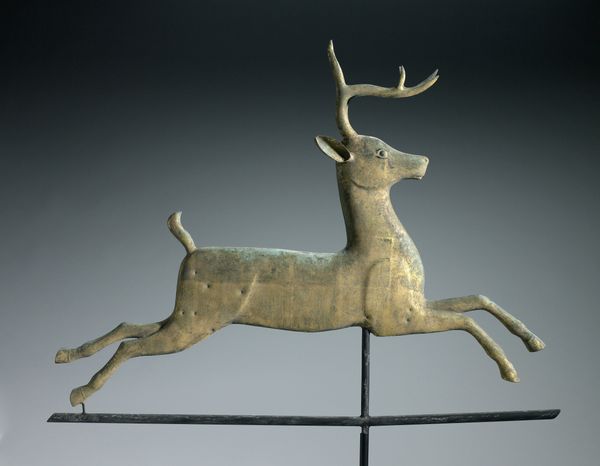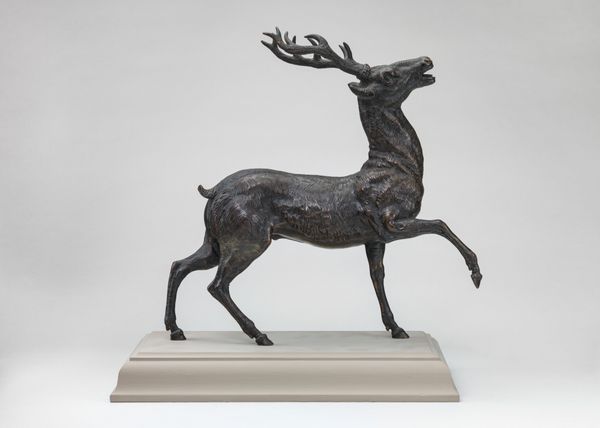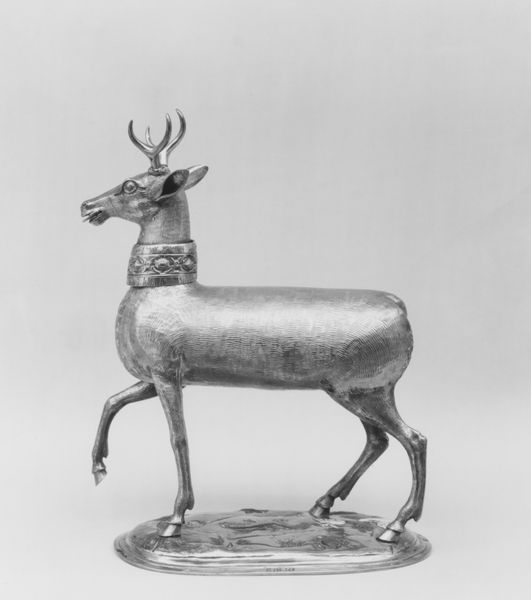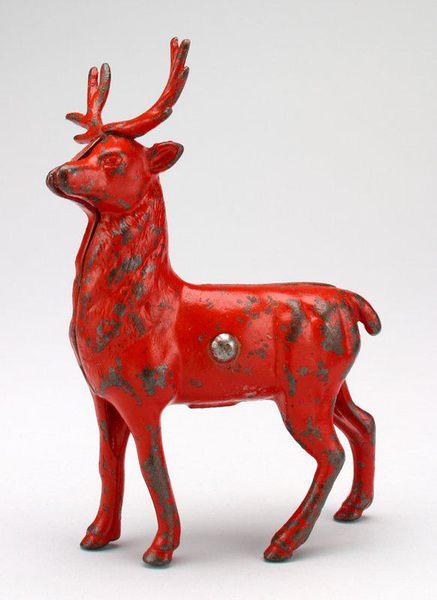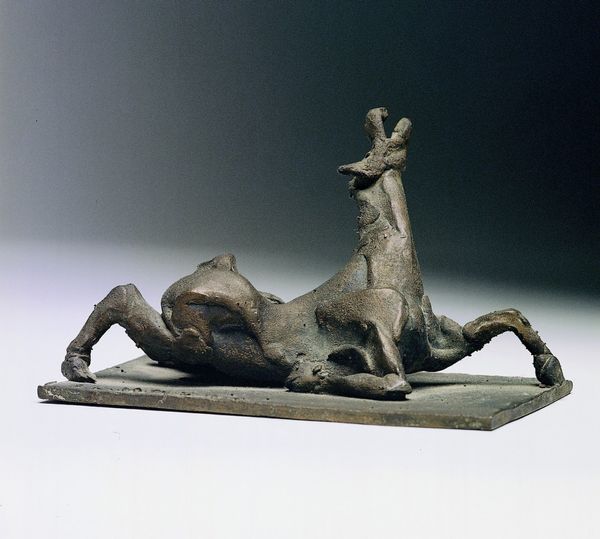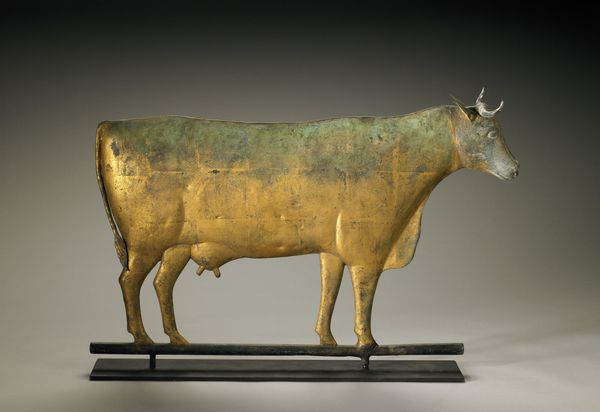
#
3d sculpting
#
3d model
#
futuristic
#
sculpture
#
3d character model
#
sculptural image
#
unrealistic statue
#
3d modeling
#
united-states
#
3d character modeling
#
3d concept
Dimensions: 2 7/16 x 14 5/16 x 14 7/16 in. (6.19 x 36.35 x 36.67 cm)
Copyright: Public Domain
Editor: So this is a "Weathervane directionals" from the 19th century, found at the Minneapolis Institute of Art. It’s pretty neat, this sculptural rendering of a deer, sort of frozen mid-leap. As a practical object elevated to art, what exactly am I looking at here? Curator: You’re observing a piece deeply embedded in American vernacular culture. Weathervanes weren't simply functional tools; their imagery became potent symbols, especially in rural communities. Consider the iconography: Why a deer? What values might it represent for the people commissioning and viewing this object? Editor: Freedom? Connection to the natural world? Possibly hunting? But weren't these mass-produced? Does that diminish their artistic merit or symbolic weight? Curator: Mass production doesn’t necessarily negate symbolic meaning; rather it democratizes access to it. Think about it: whose rooftops bore these symbols, and what did displaying them broadcast to neighbors and passersby? It's not just about personal connection to nature, but also about public declarations of identity, taste, and even aspirations. Editor: That's a fascinating point – the rooftop as a billboard of sorts. So, reading it as a cultural artifact means understanding not only the image, but the act of displaying it and the implied message. Did specific images have political associations at the time? Curator: Indeed. As industrialization transformed the landscape, figures like this deer represented idealized versions of rural life that were fast disappearing. Moreover, certain imagery could be associated with political parties or social movements. Considering the original context is paramount. What have you noticed? Editor: That even utilitarian objects like weathervanes could carry a weight of cultural meaning tied to the changing socio-political landscape. Curator: Precisely. Seeing art as more than aesthetic objects opens avenues into understanding broader historical narratives.
Comments
No comments
Be the first to comment and join the conversation on the ultimate creative platform.
